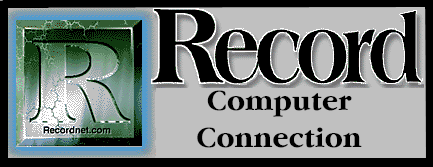

Well, I suppose it really isn't in the spirit of Christmas to buy yourself a gift, but this year I couldn't resist. So after all the compulsory...I mean customary shopping was complete, I put one more box under the tree for me! I had to after all, because when I put a Visioneer PaperPort scanner at the top of my wish list, everyone looked at me blankly and said, "Huh? -- Buy it yourself".
No, it's not a sci-fi movie remake or a police radio but rather a desktop device about half the size of a shoe box that you feed papers, articles, pictures or business cards into and their images are captured instantly onto your computer. It's a practical solution for everyday business needs and a big step towards the paperless office.
A scanner is an input device that captures an optical image and then digitizes it into an electronic image that can be recognized by your computer. In some ways it's similar to the facsimile (fax) machine which scans images and converts them into electrical signals which can be transmitted over phone lines.
Scanners come in two basic flavors: flatbed and sheet-fed. Flatbed scanners are more akin to a copy machine and require as much room as the average printer. Sheet-fed scanners, on the other hand, are quite compact. The Visioneer PaperPort is 13" long, 3.5" high and 2.5" deep and fits nicely into most convenient locations.
Visioneer developed the sheet-fed scanner and the competition has been scrambling to catch up ever since. The PaperPort scanner was the 1995 Home Office Editors Pick in the scanner category and Macworld recently declared this product its 1995 winner the System Enhancement/Hardware category.
Why all the kudos? It's not so much the actual device itself which is both convenient and unobtrusive, but rather the PaperPort software that accompanies the scanner. It's being heralded by software reviewers as "nothing short of amazing"; "it will revolutionize the way paper is handled in today's offices".
I'd certainly have to agree. I found the PaperPort scanner to be clever, intuitive, flexible, and just plain fun. The scanner itself has no actual power switch, but is activated whenever paper is inserted into the feed slot. The software is "hot" also, in that it is activated immediately upon document scanning, no matter what Windows application happens to be open.
Once a document is scanned you can add text, post-it-notes, highlighting in various colors, arrows and other annotations. You can also cut, copy and paste parts or all of the document as you would in any other Windows application. It's a great way to grab images, logos for example, for use in other documents or fill out an application using your computer.
Your final image can be merged with other documents or files, faxed, e-mailed or filed in one of the PaperPort directories that can be customized for your own use. I often use my scanner simply as a quick copier, sending a document to the printer after scanning. Any color annotations made to a scanned document can be printed in color as well, if you have a color printer.
Scanned documents can also be transformed into text using a process called Optical Character Recognition (OCR). When you first scan a document, it is recognized by your computer as a graphic image, or picture. In order to edit actual scanned text or copy text portions for use in other documents, you must convert the graphic image to text via OCR.
PaperPort makes it easy to just drag a scanned image and drop it atop one of the word processing links on the Link Bar which then automatically executes the application. How well a word processing application can recognize scanned text depends on many variables, but a clear text document usually translates pretty well using OCR.
With an average price street price of $350, Visioneer PaperPort for IBM or Mac, is not the cheapest scanner in the black & white, sheet-fed variety, but it's hands down the best. The software alone, which is also licensed to other manufacturers, is worth the investment. Visioneer additionally bundles PictureWorks Copies and Card Scan, a business card scanning software, with the PaperPort scanner.
PC system requirements for the PaperPort are Windows or Windows
95, 8MB of free hard disk space, 8MB RAM and an available serial
port. If the paperless office is in your future...this is the
product for you!
Feedback? E-Mail cschuler@ceeprompt.com